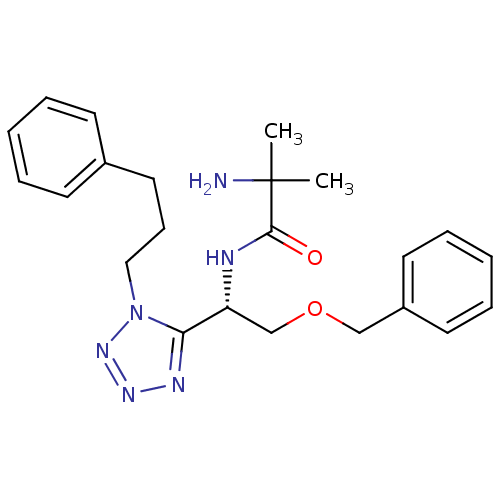 Found 4 Enz. Inhib. hit(s) with Target = 'Growth hormone secretagogue receptor type 1' and Ligand = 'BDBM50222164'
Found 4 Enz. Inhib. hit(s) with Target = 'Growth hormone secretagogue receptor type 1' and Ligand = 'BDBM50222164' TargetGrowth hormone secretagogue receptor type 1(Homo sapiens (Human))
Bristol-Myers Squibb Pharmaceutical Research Institute
Curated by ChEMBL
Bristol-Myers Squibb Pharmaceutical Research Institute
Curated by ChEMBL
Affinity DataKi: 200nMAssay Description:Displacement of [125I]Ghrelin from human GHSR1a after 1 hrMore data for this Ligand-Target Pair
TargetGrowth hormone secretagogue receptor type 1(Homo sapiens (Human))
Bristol-Myers Squibb Pharmaceutical Research Institute
Curated by ChEMBL
Bristol-Myers Squibb Pharmaceutical Research Institute
Curated by ChEMBL
Affinity DataKi: 200nMAssay Description:Agonist activity at human GHS receptor expressed in H4 glioma cellsMore data for this Ligand-Target Pair
TargetGrowth hormone secretagogue receptor type 1(Homo sapiens (Human))
Bristol-Myers Squibb Pharmaceutical Research Institute
Curated by ChEMBL
Bristol-Myers Squibb Pharmaceutical Research Institute
Curated by ChEMBL
Affinity DataEC50: 17nMAssay Description:Agonist activity at human GHS receptor expressed in H4 glioma cells assessed as intracellular calcium concentration by FLIPR assayMore data for this Ligand-Target Pair
TargetGrowth hormone secretagogue receptor type 1(Homo sapiens (Human))
Bristol-Myers Squibb Pharmaceutical Research Institute
Curated by ChEMBL
Bristol-Myers Squibb Pharmaceutical Research Institute
Curated by ChEMBL
Affinity DataEC50: 17nMAssay Description:Agonist activity at human GHS receptor expressed in H4 glioma cells assessed as intracellular calcium concentration by FLIPR assayMore data for this Ligand-Target Pair
